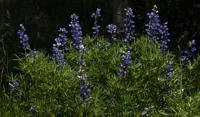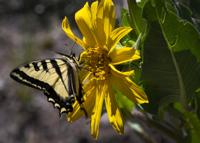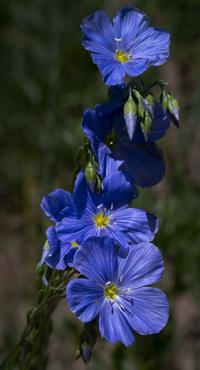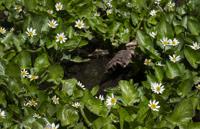Colorado could see one of best wildflower seasons in a while, experts says
Maggie Gaddis has been roaming her usual parks and open spaces around Colorado Springs and delighting in unusual sights.
“I’ve seen a lot of species that we haven’t seen in a couple of years,” said the wildflower enthusiast and scientist.
The executive director of the Colorado Native Plant Society has seen scarlet globe mallows popping. Indian paintbrush are dancing. Penstemon are bursting.
Best spots to see wildflowers in Colorado? We asked a few experts
“I don’t really see a lot of lupin around here, but I’ve been seeing a bit more with all the moisture,” Gaddis said.

Silver lupine bloom under the aspen trees Wednesday, June. 28, 2023, near Brush Creek, south of Crested Butte, Colo. (The Gazette, Christian Murdock)
Christian Murdock/The Gazette

Silver lupine bloom under the aspen trees Wednesday, June. 28, 2023, near Brush Creek, south of Crested Butte, Colo. (The Gazette, Christian Murdock)
In the wake of an exceptionally snowy winter and wet spring across the mountains and plains, the season of color is only just beginning.
“Early signs are it’s going to be one of the best wildflower seasons in a long time,” said Ian Billick, executive director of the Rocky Mountain Biological Laboratory outside Crested Butte.
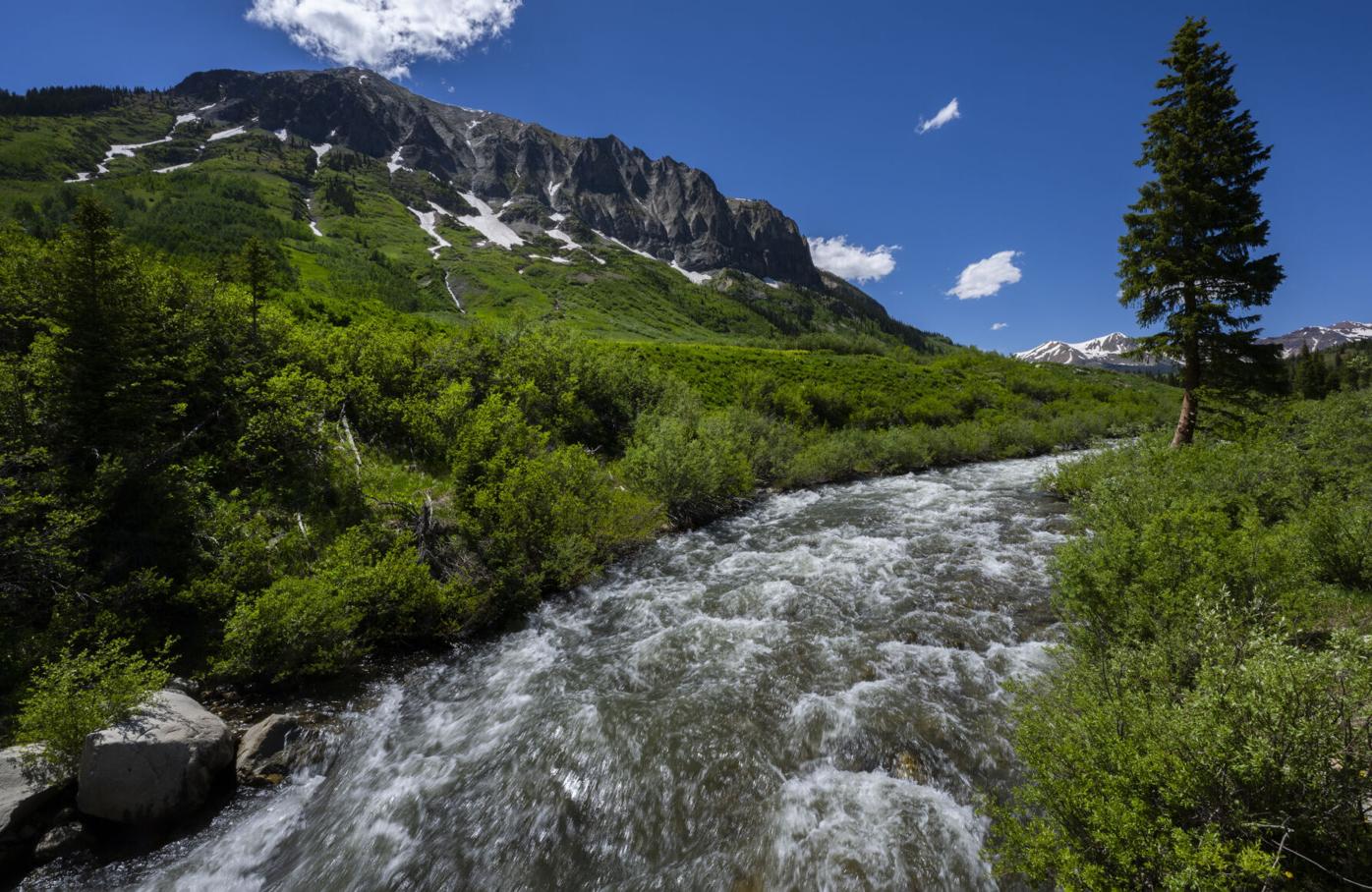
The East River flows fast below Gothic Mountain on a warm summer afternoon Wednesday, June 28, near Crested Butte.
Christian Murdock/The Gazette

The East River flows fast below Gothic Mountain on a warm summer afternoon Wednesday, June 28, near Crested Butte.
Crested Butte is Colorado’s heralded “wildflower capital,” a reputation credited to sloping aspects and geology that bless a colorful array across meadows and mountainsides. The annual wildflower festival is set for July 7-16 — the typical timeframe for vibrant blooms along the state’s elevations.
Lingering snowpack is poised to stall displays in the high country, said Tom Zeiner, a longtime volunteer and educator with the festival. Nonetheless, hikes, seminars and other events were about sold out heading into July.
“It’s our best year so far for early sales,” Zeiner said.
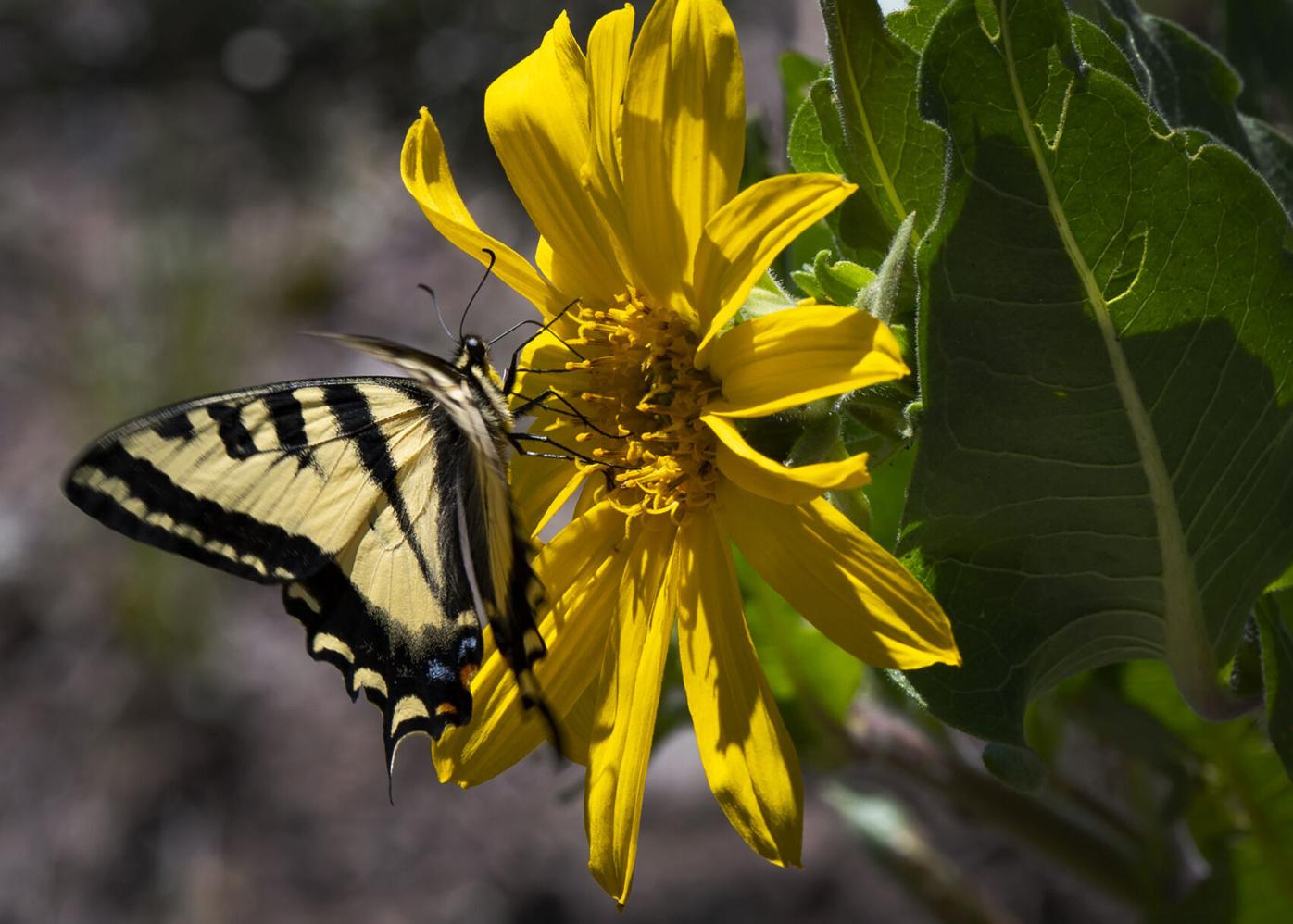
A butterfly lands on a Mule’s Ear Sunflower in the Brush Creek area of Crested Butte. The sunflowers and other wildflowers were plentiful near the base of Pearl Pass last week.
photos by Christian Murdock, The Gazette

A butterfly lands on a Mule’s Ear Sunflower in the Brush Creek area of Crested Butte. The sunflowers and other wildflowers were plentiful near the base of Pearl Pass last week.
Perhaps hype has followed the headlines and photos of “super blooms” out of Southern California and Arizona in the spring. If you’re expecting the same show in Colorado, it might be good to temper expectations, said Jen Bousselot, an assistant professor of horticulture at Colorado State University.
“We’re so much farther north than those locations, and we don’t have the same diversity and abundance of species, so it’s never going to look like that,” she said. “But for Colorado, I think we’re going to have a higher bloom than normal.”
That’s judging from one of the research “green roofs” she oversees in Fort Collins. Yellow daisies, blue flax, pink and orange blanket flowers and white primrose have been among the palette.
“We have a super bloom on that green roof right now,” Bousselot said.
That can be fleeting, she knows.
It’s a word of caution any expert will tell you when it comes to forecasting wildflowers: “Things can change quickly,” said Nicola Ripley, executive director of the Betty Ford Alpine Gardens in Vail.
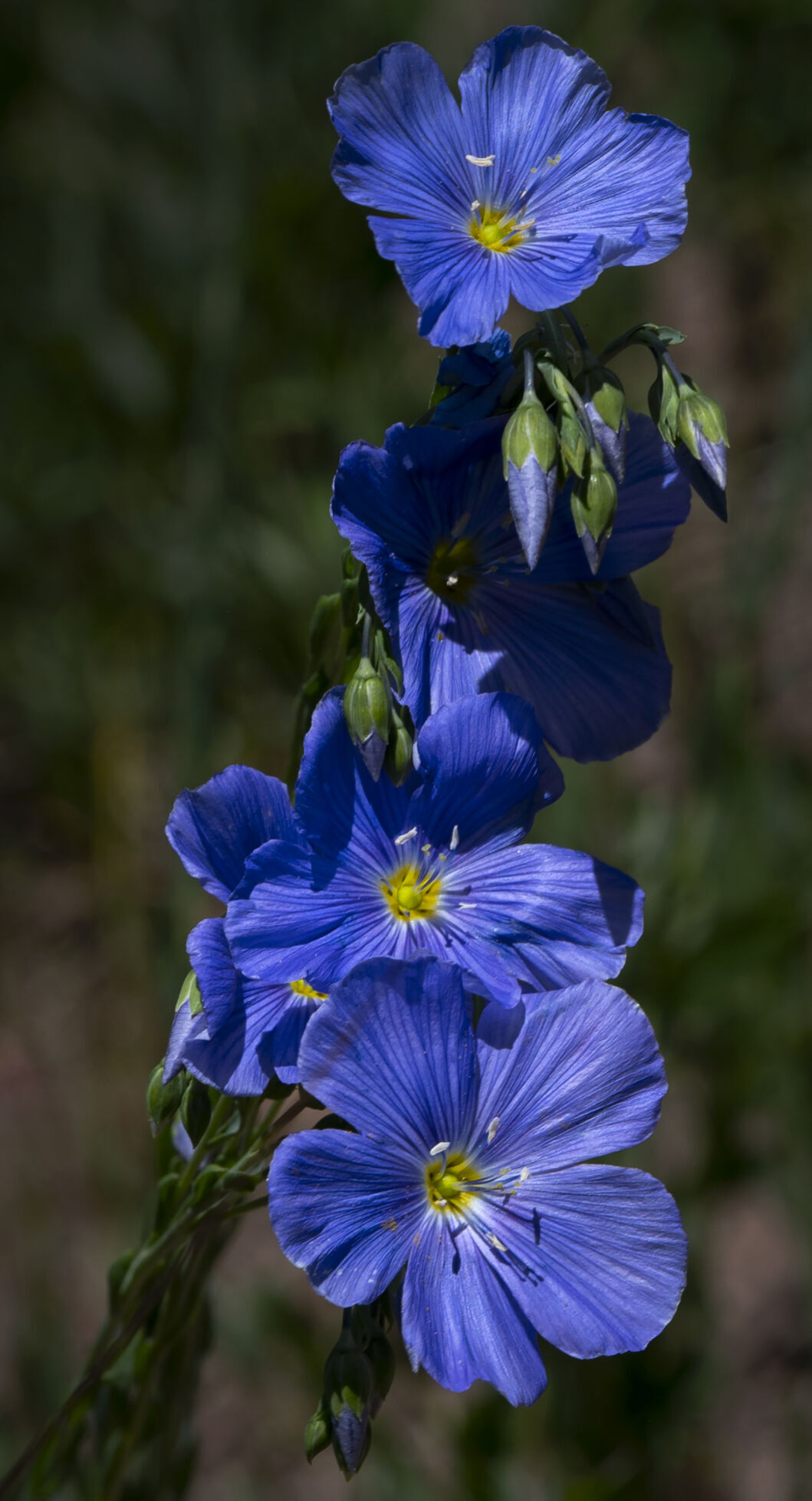
Wild blue flax bloom in the afternoon sun in late June in the Brush Creek area south of Crested Butte.
Christian Murdock/The Gazette

Wild blue flax bloom in the afternoon sun in late June in the Brush Creek area south of Crested Butte.
Things can change if rains stop and temperatures rise. Sunny days and cool nights add to the recipe of growth. Wind and frost are threats to that growth.
“It’s like every year we have the hope, and only about every seven to 15 years do we actually get to see (super blooms) because all the factors don’t necessarily align,” Bousselot said.
She’s hopeful as ever. As is Billick, who points to lingering snowpack above treeline as a good thing — even if it means sightseers have to be patient for weeks in July.
“That late snowpack just helps wildflowers not start growing too early, so you don’t get the (early summer) frost events that kill the buds,” Billick said.
In the meantime, there will be plenty to admire below, he said. He was imagining sunflower-spotted meadows where “some years you don’t see flowers and other years there’s nothing but yellow,” he said. “I suspect it’s going to be one of those years where it’s nothing but yellow.”
But vegetation can be something of a “double-edged sword,” Gaddis said.
“Whenever this happens, we need it to be followed by a strong monsoon season,” she said. “Otherwise we have a lot of tall grasses, and our fire danger increases.”

070323-ot-flowers-dg
Christian Murdock/The Gazette

070323-ot-flowers-dg
While there’s celebration for the prospects of blooms, there’s continued worry of long-term drought and this era of bigger, more destructive wildfires.
Climate change continues to wreak havoc on pollinator populations and cast a shadow over their future relationship with flowers. The Rocky Mountain Biological Laboratory continues to research how warming influences bloom places and times and how feeders and seed spreaders are adapting or not. Read a recent National Geographic headline based on that research: “Nature is out of sync — and that’s reshaping everything, everywhere.”
A season of super blooms is as good a time as any to reflect on those changes, Ripley said. Betty Ford Alpine Gardens has rolled out a new and improved and free app, called Alpine Wildflower Finder, for identifying species in the wild.
It’s a tool in honor of a quote the education center often relays from conservationist Baba Dioum: “In the end we will conserve only what we love; we will love only what we understand; and we will understand only what we’ve been taught.”
With super blooms, Gaddis said, we might better understand the native land before human disturbance — “to appreciate the aesthetic of what should be here with us,” she said.
It might be an increasingly rare sight, Bousselot said.
“But it helps us fall in love with our state all over again,” she said.





